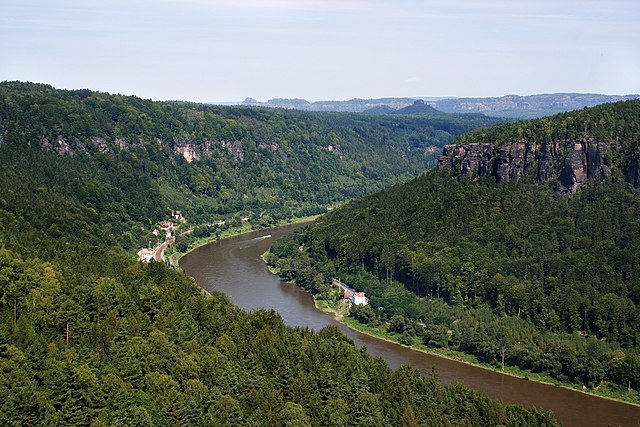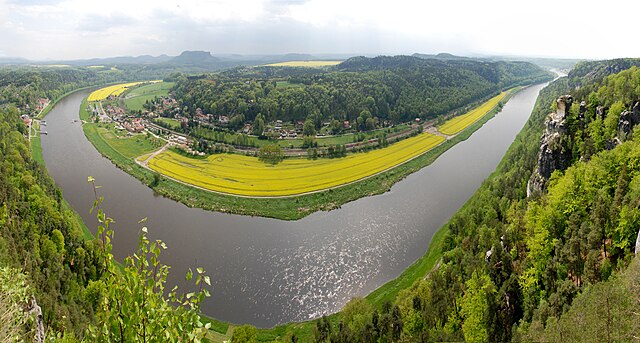The Elbe–Lübeck Canal is an artificial waterway in eastern Schleswig-Holstein, Germany. It connects the rivers Elbe and Trave, creating an inland water route across the drainage divide from the North Sea to the Baltic Sea. The canal includes seven locks and runs for a length of 64 kilometres (40 mi) between the cities of Lübeck in the north and Lauenburg in the south by way of the Mölln lakes. The modern canal was built in the 1890s to replace the Stecknitz Canal, a medieval watercourse linking the same two rivers.
The Imperial German torpedo boat S65 making the first transit of the Elbe–Lübeck Canal by a warship in 1903
A barge loaded with timber in a lock on the Elbe–Lübeck Canal
The Elbe is one of the major rivers of Western Europe. It rises in the Giant Mountains of the northern Czech Republic before traversing much of Bohemia, then Germany and flowing into the North Sea at Cuxhaven, 110 kilometres northwest of Hamburg. Its total length is 1,094 km (680 mi).
The Elbe (Labe) near Děčín, Czech Republic
The Middle Elbe in the North German Plain near the village of Gorleben. In this section, the river had been part of the Iron Curtain between West and East Germany during the Cold War. For that reason, the river banks even today look relatively natural and undeveloped. (Photo taken 2011)
View of the Elbe in Saxon Switzerland, an area in Germany
The Port of Hamburg on the Elbe






